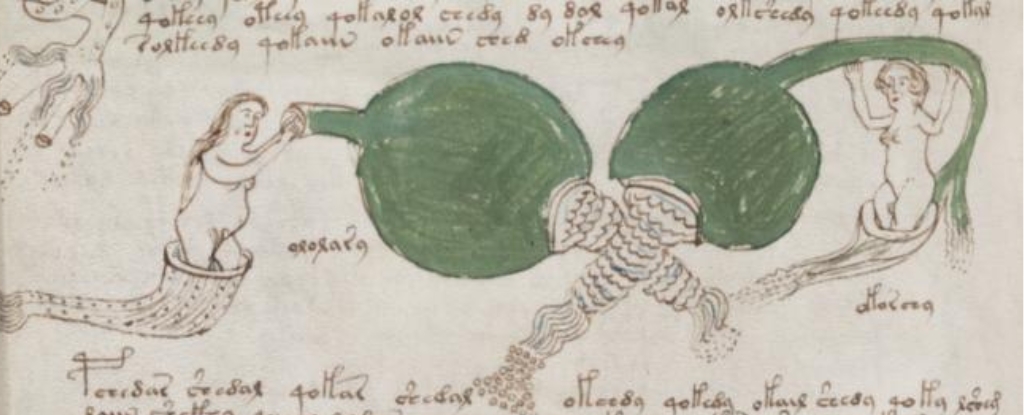Products You May Like
The Voynich manuscript has long puzzled and fascinated historians and the public.
This late-medieval document is covered in illustrations of stars and planets, plants, zodiac symbols, naked women, and blue and green fluids. But the text itself – thought to be the work of five different scribes – is enciphered and yet to be understood.
In an article published in Social History of Medicine, my coauthor Michelle L. Lewis and I propose that sex is one of the subjects detailed in the manuscript – and that the largest diagram represents both sex and conception.
Late-medieval sexology and gynaecology
Research on the Voynich manuscript has revealed some clues about its origins. Carbon dating provides a 95% probability the skins used to make the manuscript come from animals that died between 1404 and 1438.
However, its earliest securely known owner was an associate of Holy Roman Emperor Rudolf II, who lived from 1552 to 1612, which leaves more than a century of ownership missing.
Certain illustrations (the zodiac symbols, a crown design and a particular shape of castle wall called a swallowtail merlon) indicate the manuscript was made in the southern Germanic or northern Italian cultural areas.
One section contains illustrations of naked women holding objects adjacent to, or oriented towards, their genitalia. These wouldn’t belong in a solely herbal or astronomical manuscript.
To make sense of these images, we investigated the culture of late-medieval gynaecology and sexology – which physicians at the time often referred to as “women’s secrets”.
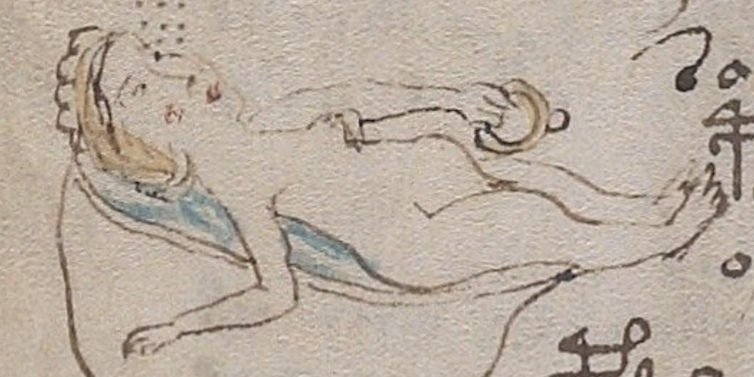
First we looked at Bavarian physician Johannes Hartlieb (circa 1410–68), who lived around the time and place the Voynich manuscript was made.
Hartlieb wrote about plants, women, magic, astronomy and baths. He also recommended the use of “secret letters” (such as a cipher, secret alphabet, or similar) to obscure medical recipes and procedures that may result in contraception, abortion or sterility.
Although his secret alphabet hasn’t survived, analysing his work has helped us understand the attitudes that would have inspired the use of encipherment at the time.
For instance, Hartlieb felt a strong apprehension about “women’s secrets” becoming widely known. He worried his writings could facilitate extramarital sex and that God would condemn him if this happened.![]()
In his un-enciphered writings, he either refuses or hesitates to write about certain topics, such as post-partum vaginal ointments, women’s sexual pleasure, claims of women giving birth to animals, the “correct” coital positions for conception, libido-altering dietary advice, and information about poisonous, hallucinogenic, contraceptive or abortive plants.
Writing for male aristocrats in vernacular Bavarian (rather than academic Latin), Hartlieb says such knowledge should be restricted from sex workers, commoners, children, and in some cases from women themselves – who were becoming increasingly literate.
As a man who valued heterosexual marriage and women’s “modesty”, and who condemned lust, promiscuity and prostitution, he was perfectly conventional for his milieu.
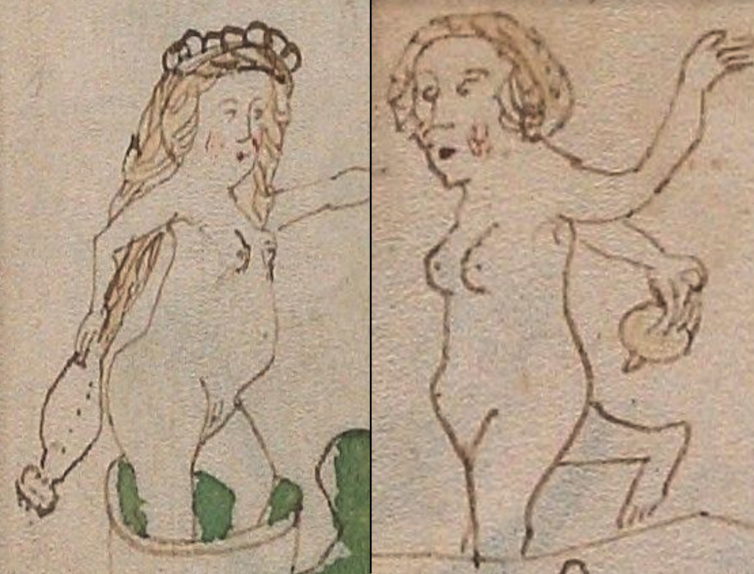
Censorship
If such attitudes were widespread back then, was the censorship of women’s secrets also widespread? The short answer is: yes.
During our research, we decoded a number of ciphers from this period (but none from the Voynich manuscript). The longest was a 21-line cipher from late-medieval northern Italy that obscured a recipe with gynaecological uses, including abortion.
We also found many examples of authors self-censoring, or of readers erasing or destroying information in gynaecological and/or sexological texts. Censors would often only obscure a few words, usually genital terms or plant names in recipes – but sometimes they would remove entire pages or chapters.
One Bavarian manuscript includes recipes for invisibility and magic spells for sexually coercing women, after which two pages have been removed. The censor writes this removal was done “not without reason”.
The Rosettes
By analysing the Voynich illustrations through this lens, we propose the Rosettes – the manuscript’s largest and most elaborate illustration – represents a late-medieval understanding of sex and conception.
Our proposal is in keeping with the patriarchal culture of the time and resolves many of the manuscript’s apparent contradictions. It also allows us to identify several of the illustration’s features.
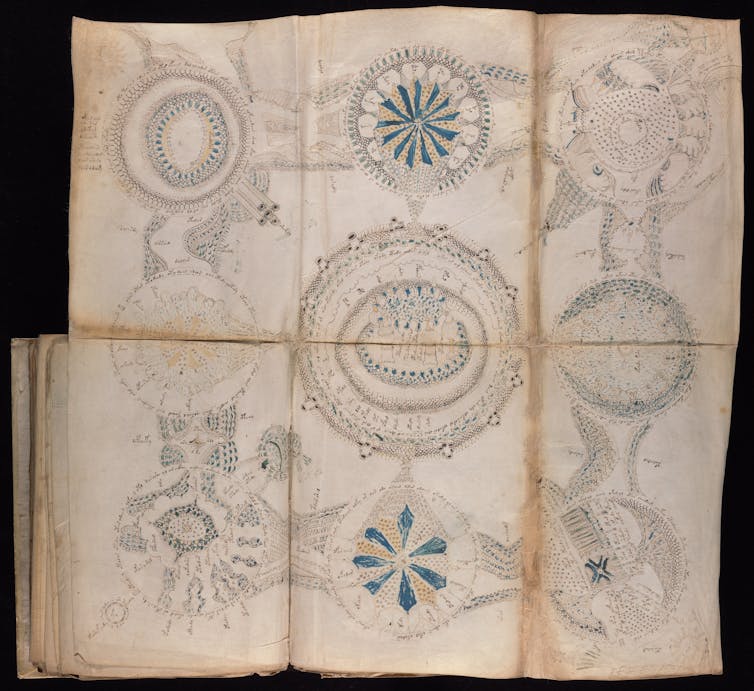
In late-medieval times the uterus was believed to have seven chambers, and the vagina two openings (one external and one internal).
We believe the nine large circles of the Rosettes represent these, with the central circle representing the outer opening, and the top-left circle representing the inner opening. The eight outer circles have smooth edges since they represent internal anatomy, while the central circle has a shaped edge since it represents external anatomy.
Abu Bakr Al-Rāzī, a Persian physician who influenced late-medieval European medicine, wrote that five small veins exist in the vaginas of virgins. We see these running from the top-left circle towards the centre.

Physicians back then also believed a male and female component were necessary for conception, and both of these were called “sperm”. These are shown in yellow (male) and blue (female).
Women were thought to receive pleasure from the motion of the two sperms in the uterus, which is depicted through the lines and patterns.
It was also thought the uterus had two horns or spikes, which we can see on the top-right and bottom-right circles.
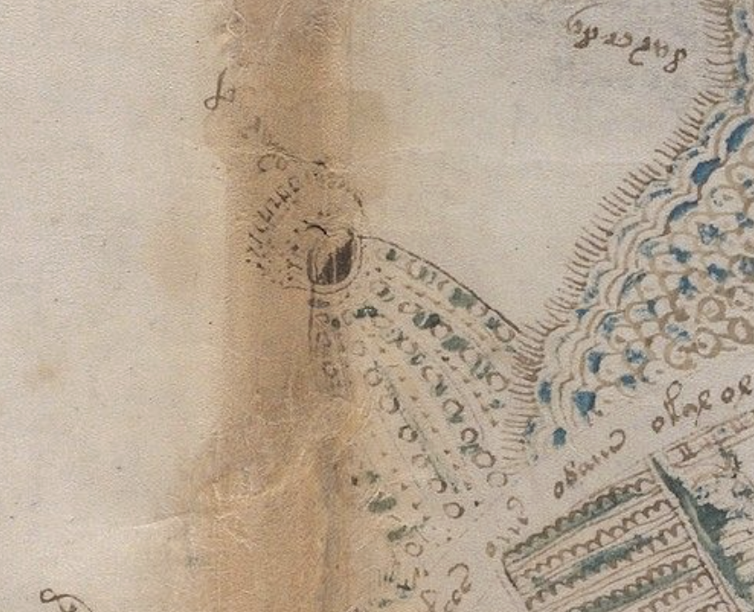
The castles and town walls may represent wordplay on the German term schloss, which had meanings including “castle”, “lock”, “female genitalia” and “female pelvis”.
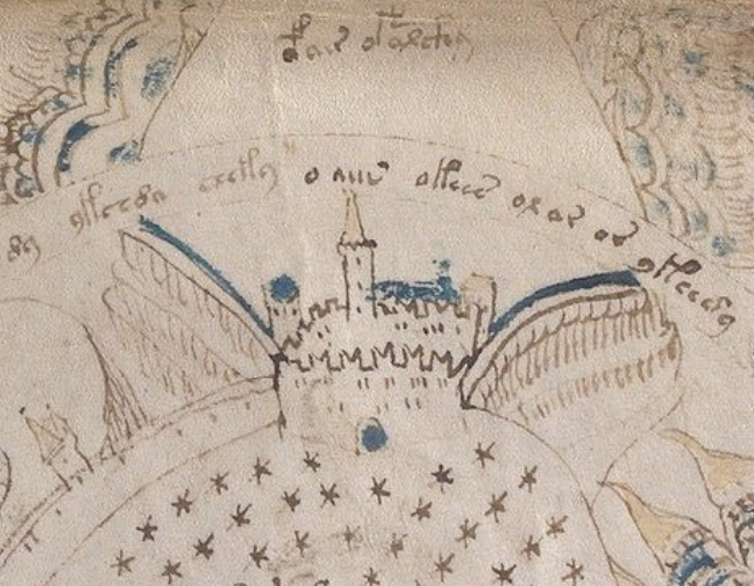
And the two suns in the far top-left and bottom-right likely reflect Aristotle’s belief that the Sun provides natural heat to the embryo during its early development.
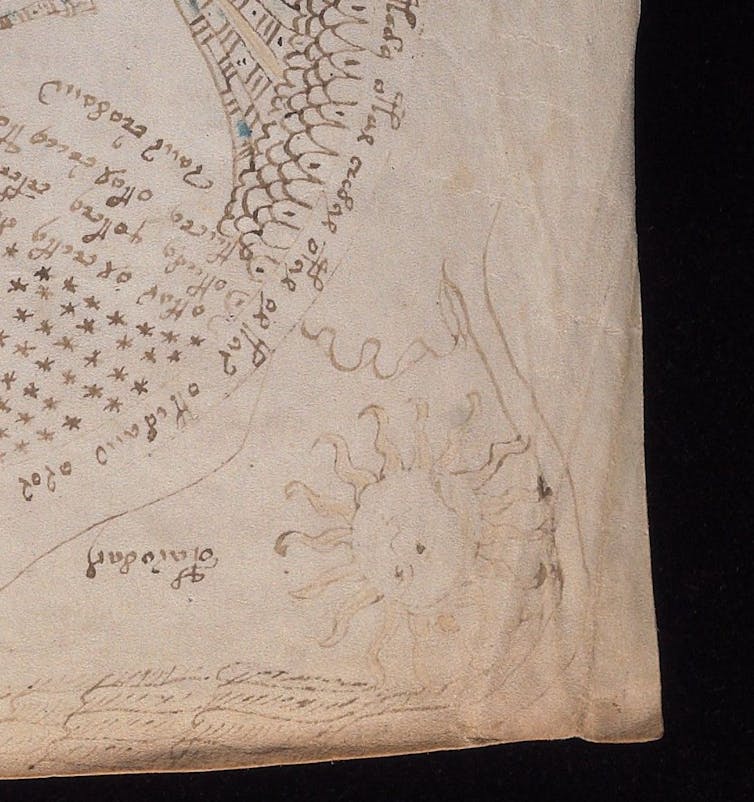
While many features of the illustration are yet to be understood, our proposal is worth close scrutiny. We hope future research into the manuscript will approach it through a similar lens. Perhaps, with enough clues, we might find a way to finally decode this elusive text.![]()
Keagan Brewer, Research Fellow, Department of Media, Communications, Creative Arts, Language, and Literature, Macquarie University
This article is republished from The Conversation under a Creative Commons license. Read the original article.
